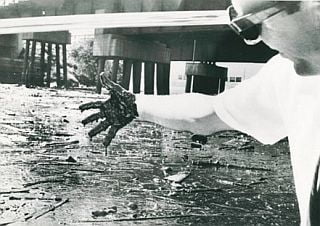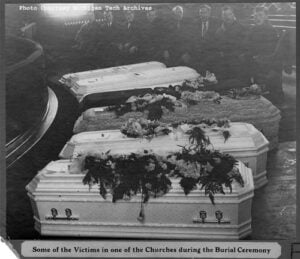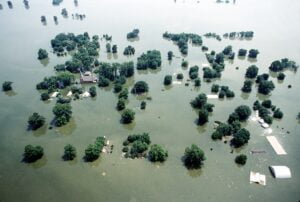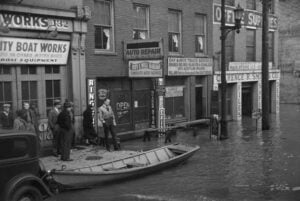Cleveland’s flammable river
Since 1868, over 13 fires ravaged the river. Rapid industrialization turned the river into a moving stream of toxic sludge. Already by 1881, then-Cleveland Mayor Rensselaer R. Herrick proclaimed that it was an “open sewer.”

exc-5bb69077e5e5f09147c01acc
“The Cuyahoga will live in infamy as the only river that was ever declared a fire hazard.”
– Congressman Louis Stokes
Since 1868, over 13 fires ravaged the river. Rapid industrialization turned the river into a moving stream of toxic sludge. Already by 1881, then-Cleveland Mayor Rensselaer R. Herrick proclaimed that it was an “open sewer.” Early sewage systems poured waste into the water.
In the 20th century, companies like Standard Oil dug ditches pouring gallons of flammable waste into the river every day. Fish couldn’t survive in the river, and the waters were patrolled by fire boats. The stench from the Cuyahoga River and the polluted Lake Erie nauseated visitors and citizens alike.
The Cleveland River Fires
The biggest blaze occurred in 1952, which swallowed a tug boat and eventually caused over $1.3 million in damages. Flames engulfed five people in 1912.
But the fire that made the river infamous was in 1969. The oil floating at the top of the water ignited, creating a 20 minute long blaze. Compared to other Cuyahoga fires, this one instilled $100,000 worth of damages.
The River Gets Cleaned Up
During the 1960s, Cleveland was in the national spotlight. The city elected the first African American to serve as mayor of a major city. The industries that catapulted Cleveland from a swamp to a major hub, were disappearing, leaving only the shadows of abandoned factories and warehouses. This led to Time Magazine picking up the story, making Cleveland’s pollution infamous nationwide.
Eventually, the federal government took into account the plague of water pollution seeping into rivers and lakes nationwide. The Clean Water Act of 1972 was passed. Since the 1969 fire, over $3.5 billion has been spent purifying the Cuyahoga River, while developing new sewer systems.
Today, the river is cleaner, and the toxic grounds surrounding it have been cleaned up. Geese and schools of fish have returned, while the city has invested in new developments including parks, restaurants, shopping, and more.
Cleveland’s infamous river fires still haunt the city. People unfamiliar with the city joke about Cleveland’s pollution. “At least our rivers don’t catch fire.”
What are your comments on the Cuyahoga River fires?





